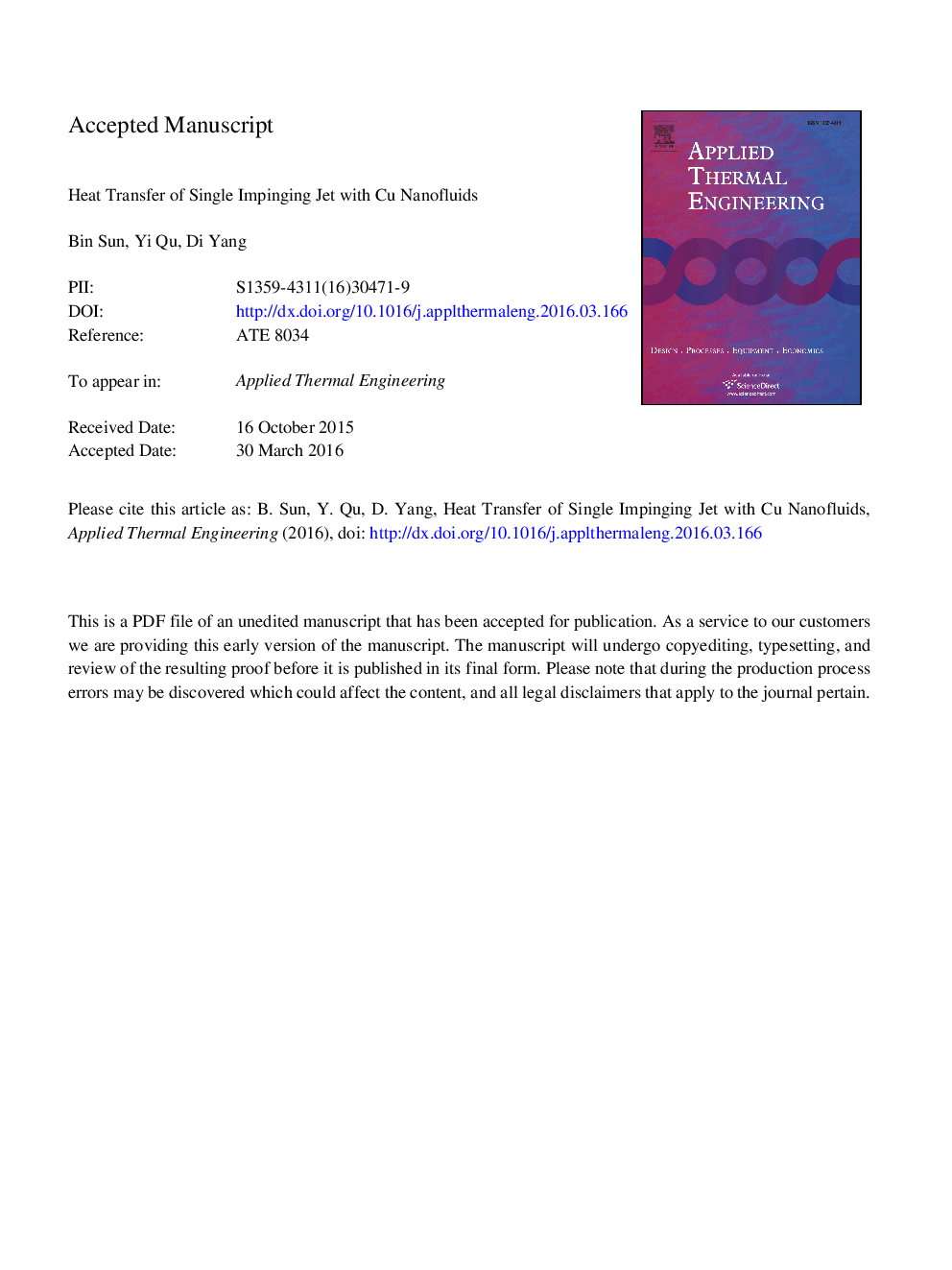| Article ID | Journal | Published Year | Pages | File Type |
|---|---|---|---|---|
| 7048178 | Applied Thermal Engineering | 2016 | 15 Pages |
Abstract
In this study, the comprehensive performance of a heat exchanger with an impinging jet cooling system was experimentally investigated through nanofluids. Furthermore, heat transfer efficiency was mainly determined by comparing different flow rates, jet heights, and types of nanofluids. Results show that the use of nanofluids on impinging jet cooling systems significantly improved heat transfer efficiency and that the pressure drop in the system did not change considerably. Unlike different jet conditions, nozzle shape affected the heat transfer coefficient significantly. When nanofluids are employed as the working fluid, the convective heat transfer coefficient was higher in circular nozzles than in square nozzles. Moreover, the larger the jet angle, the stronger the heat transfer effect; the ideal jet impingement cooling effect is achieved when the jet angle reaches 90°. In addition, a particular nozzle size maximizes the heat transfer effect at the same jet conditions.
Related Topics
Physical Sciences and Engineering
Chemical Engineering
Fluid Flow and Transfer Processes
Authors
Bin Sun, Yi Qu, Di Yang,
